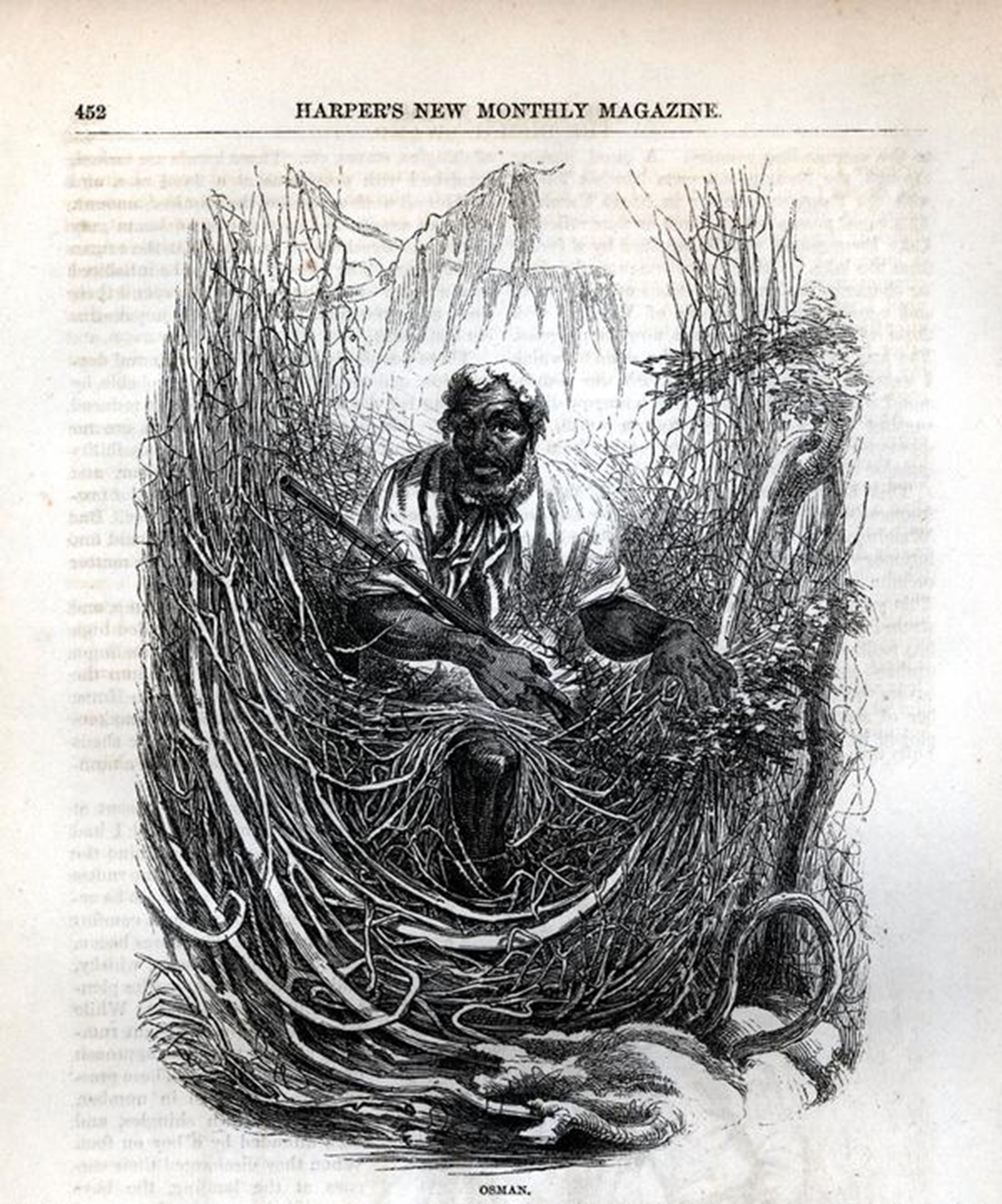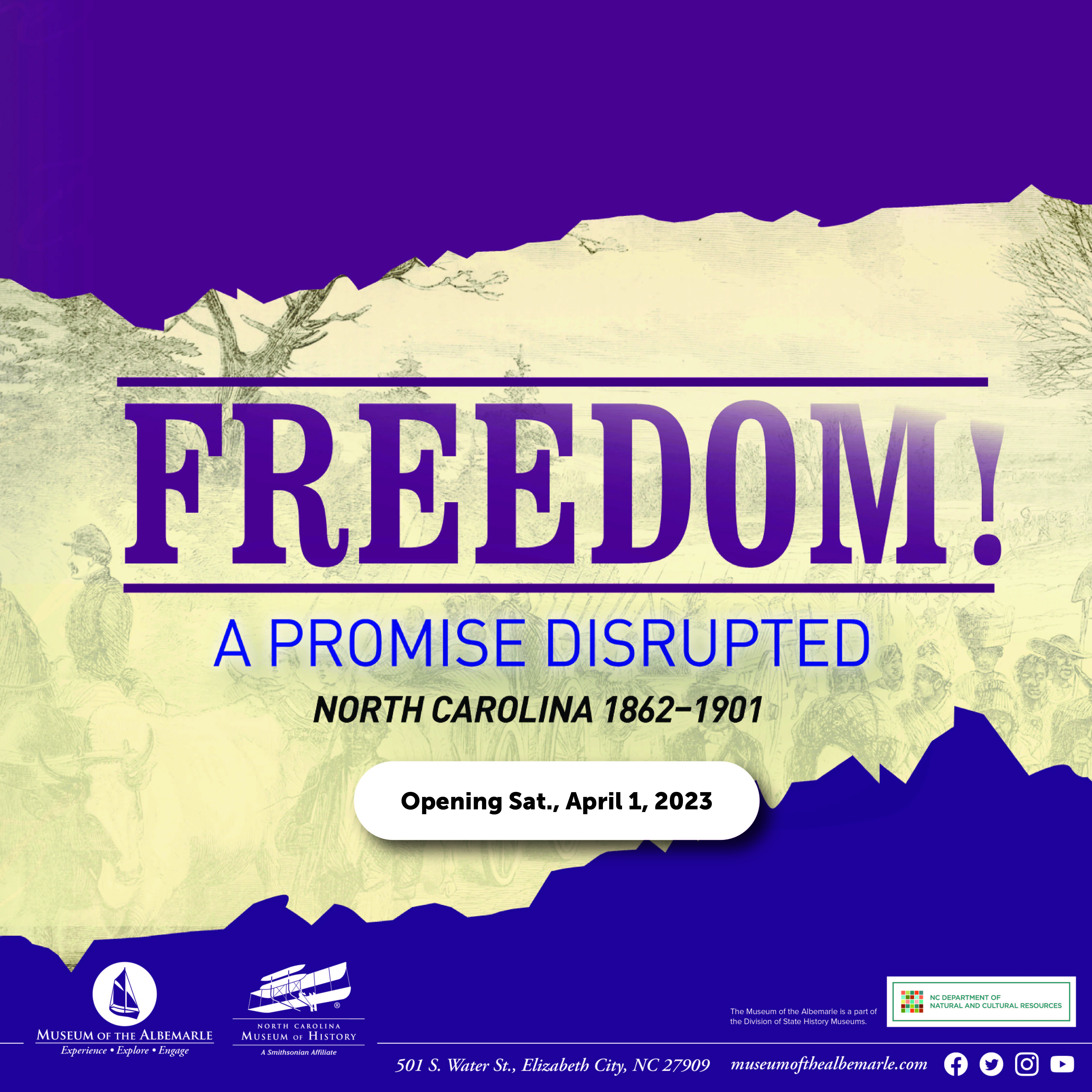
1 minute read
Freedom in the Harshest of Places
By Noah Edwards, Collections Assistant
The Great Dismal Swamp is a foreboding environment full of dangers, but it was once a refuge for many seeking to escape the horrifying institution of slavery.
Depiction of Maroon Leader, Osman, 1856

David Hunter Strother’s 1856 depiction of maroon leader, Osman, for Harper’s New Monthly Magazine.
Courtesy the Library Company of Philadelphia
Early in the colonial era, the swamp became a refuge for debtors, criminals, religious dissidents, indentured servants, and enslaved individuals. As slavery expanded, the Great Dismal became a greater sanctuary for the self-emancipated. The swamp was a well-known haven for individuals avoiding capture since pursuers often only entered at their own peril. Low estimates of the swamp’s population are in the thousands making it possibly the largest maroon community in North America.
The Great Dismal Swamp was not simply a stop for people continuing on the Underground Railroad, the archaeological record reveals. Archaeologists have found evidence of houses and agriculture, showing that for many who entered the swamp, it was more than a temporary refuge. The Great Dismal Swamp provided the opportunity to establish homes and families, raise crops and livestock, and live with a measure of freedom.

To learn more about how people continued to strive for freedom following the end of slavery, visit the exhibit, Freedom! A Promise Disrupted: North Carolina, 1862–1901 at the Museum of the Albemarle.









